Evaluating Oil Filled Transformer Manufacturers: Key Factors for Utility Companies to Consider?
Are you struggling to choose the right oil filled transformer manufacturer for your utility company? You’re not alone. Many utility companies find this decision challenging and crucial for their operations.
Evaluating oil filled transformer manufacturers requires considering several key factors. These include performance metrics, reliability records, innovation capacity, after-sales support, environmental compliance, and production capabilities. A thorough assessment of these factors ensures utility companies select manufacturers that meet their current needs and future challenges.
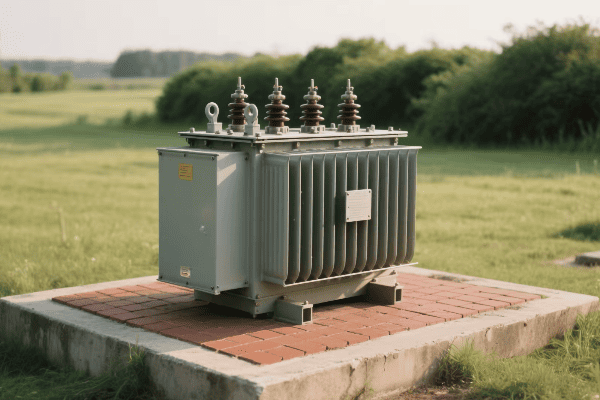
Let’s dive into the critical aspects utility companies should consider when evaluating oil filled transformer manufacturers. This guide will help you make an informed decision for your power distribution needs.
Assessing Performance and Reliability: Critical Metrics in Oil Filled Transformer Manufacturer Evaluation?
Have you ever wondered how to truly measure the quality of a transformer manufacturer? Performance and reliability are the cornerstones, but how do we quantify them?
Assessing performance and reliability of oil filled transformer manufacturers involves analyzing key metrics such as efficiency ratings, failure rates, and mean time between failures (MTBF). Utility companies should also consider load loss performance, no-load loss figures, and the manufacturer’s track record in similar applications.
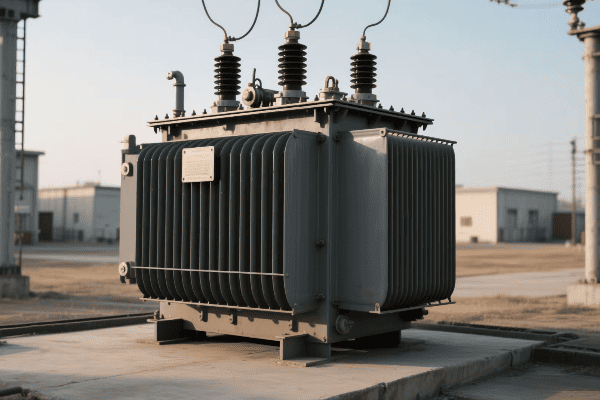
Key Performance and Reliability Metrics
-
Efficiency Ratings
- Measures transformer’s energy conversion efficiency
- Higher ratings indicate lower operational costs
-
Failure Rates
- Indicates the frequency of transformer failures
- Lower rates suggest higher reliability
-
Mean Time Between Failures (MTBF)
- Average time a transformer operates before failing
- Higher MTBF indicates better reliability
-
Load Loss Performance
- Energy lost during transformer operation under load
- Lower losses mean higher efficiency
-
No-Load Loss Figures
- Energy consumed when transformer is energized but not supplying load
- Impacts long-term operational costs
| Metric | Importance | Industry Benchmark |
|---|---|---|
| Efficiency Rating | High | >98% for modern units |
| Failure Rate | Critical | <0.5% per year |
| MTBF | Very High | >30 years |
| Load Loss | Important | <1% of rated capacity |
| No-Load Loss | Significant | <0.1% of rated capacity |
In my experience evaluating transformer manufacturers, I’ve found that these metrics are crucial but often require context to interpret correctly. I remember a case where we were comparing two manufacturers. Manufacturer A had slightly better efficiency ratings, but Manufacturer B had a significantly better MTBF.
We decided to dig deeper and looked at the actual field performance data. It turned out that while Manufacturer A’s transformers were indeed more efficient on paper, they required more frequent maintenance and had a higher failure rate in real-world conditions similar to ours. This experience taught me the importance of looking beyond just the numbers and considering practical, long-term performance.
Another important aspect I’ve learned to consider is the consistency of performance across different production batches. In one project, we encountered issues with transformers from a manufacturer who had excellent overall metrics. Upon investigation, we found that their quality control was inconsistent, leading to significant variations in performance between units.
To address this, we now request detailed quality control reports and batch testing data from manufacturers. This approach has helped us identify manufacturers who not only have good overall metrics but also maintain consistent quality across their production.
Load loss and no-load loss figures are particularly important in today’s energy-conscious environment. I worked with a utility company that was able to significantly reduce its operational costs by choosing transformers with lower no-load losses, even though they were more expensive upfront. Over a 20-year period, the energy savings more than offset the higher initial investment.
It’s also crucial to consider the specific application when evaluating these metrics. For instance, in a project involving transformers for a remote area with extreme weather conditions, we prioritized reliability and robustness over peak efficiency. The transformers we selected had slightly lower efficiency ratings but were designed to withstand harsh environmental conditions, resulting in better long-term performance and lower maintenance needs.
Lastly, I always advise looking at the manufacturer’s track record in applications similar to yours. Numbers can be misleading without context. A manufacturer might have excellent overall metrics, but if they don’t have experience with your specific type of application or environment, it could lead to unforeseen issues.
Innovation Capacity and Product Development: Identifying Forward-Thinking Transformer Manufacturers?
Are you concerned about investing in technology that might become obsolete? In the rapidly evolving energy sector, choosing a manufacturer with strong innovation capacity is crucial.
Identifying forward-thinking transformer manufacturers involves assessing their R&D investments, patent portfolios, and new product development cycles. Look for manufacturers who are actively developing smart transformer technologies, exploring new materials for improved efficiency, and innovating in areas like grid integration and sustainability.
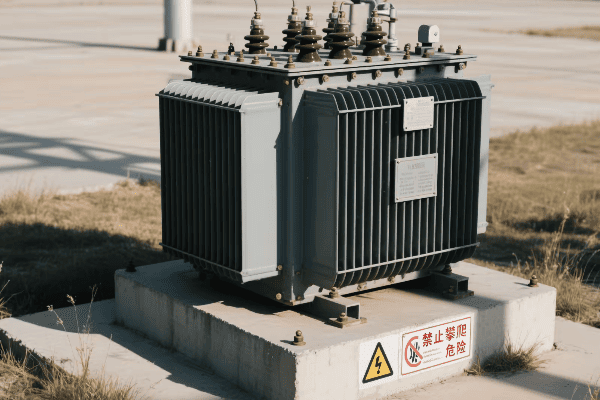
Key Indicators of Innovation Capacity
-
R&D Investment
- Percentage of revenue allocated to research
- Size and qualifications of R&D team
-
Patent Portfolio
- Number and quality of patents held
- Recent patent applications in emerging technologies
-
New Product Development Cycle
- Frequency of new product launches
- Time from concept to market for new products
-
Smart Technology Integration
- Development of IoT-enabled transformers
- Advanced monitoring and diagnostic capabilities
-
Material Science Advancements
- Research into new core and winding materials
- Innovations in insulation technology
| Indicator | Significance | Industry Leading Benchmark |
|---|---|---|
| R&D Investment | High | >5% of annual revenue |
| Patent Portfolio | Important | >50 active patents |
| Product Cycle | Significant | New model every 2-3 years |
| Smart Features | Growing Importance | IoT integration, real-time monitoring |
| Material Advancements | Critical for Efficiency | Use of amorphous metals, HTS technology |
In my years of working with transformer manufacturers, I’ve seen how crucial innovation capacity is for long-term success. I remember a project where we were deciding between two manufacturers with similar current offerings. However, one manufacturer had a much more robust R&D program and a track record of bringing innovative products to market.
We chose the more innovative manufacturer, and it paid off significantly. Within two years, they introduced a new line of smart transformers that integrated seamlessly with our developing smart grid infrastructure. This forward-thinking choice saved us from a costly retrofit process that many of our peers had to undergo.
Patent portfolios can be a goldmine of information about a manufacturer’s innovation trajectory. I once analyzed the patent filings of several manufacturers we were considering. One stood out with several patents related to high-temperature superconducting (HTS) materials. Although this technology wasn’t yet in their product line, it showed their commitment to pushing the boundaries of efficiency and performance.
The speed of the new product development cycle is another crucial factor. In a fast-evolving sector like energy, the ability to quickly bring new technologies to market can be a significant advantage. I worked with a manufacturer who had streamlined their development process to introduce new models every 18 months, allowing them to rapidly incorporate emerging technologies and respond to changing market needs.
Smart technology integration is becoming increasingly important. In a recent project, we prioritized manufacturers who were developing transformers with advanced monitoring and diagnostic capabilities. The chosen manufacturer’s transformers came equipped with IoT sensors that provided real-time data on performance and condition. This feature has dramatically improved our predictive maintenance capabilities and reduced downtime.
Advancements in material science can lead to significant improvements in transformer performance. I’ve been particularly impressed by manufacturers investing in research on amorphous metal cores. These materials can reduce no-load losses by up to 70% compared to traditional silicon steel cores. While the technology is still evolving, manufacturers leading in this area are likely to have a significant competitive advantage in the coming years.
It’s also important to look at how manufacturers are innovating in response to emerging challenges. For instance, with the increasing integration of renewable energy sources, some forward-thinking manufacturers are developing transformers specifically designed to handle the variable loads associated with wind and solar power.
Collaboration with academic institutions and participation in industry research consortia can also be indicators of a manufacturer’s commitment to innovation. I’ve found that manufacturers who actively engage in these partnerships often have access to cutting-edge research and are better positioned to translate theoretical advancements into practical applications.
Lastly, I always advise looking at a manufacturer’s approach to sustainability in their innovation efforts. Those investing in technologies to reduce the environmental impact of transformers, such as developing bio-based insulating oils or improving recycling processes, are likely to be well-positioned for future regulatory changes and market demands.
After-Sales Support and Technical Assistance: Key Differentiators Among Oil Filled Transformer Suppliers?
Have you ever been left stranded with a technical issue, desperately needing support? In the world of oil filled transformers, after-sales support can make or break your operations.
After-sales support and technical assistance are crucial differentiators among oil filled transformer suppliers. Key factors include response time, availability of spare parts, quality of technical documentation, training programs for utility staff, and remote diagnostic capabilities. Superior support can significantly reduce downtime and extend transformer lifespan.
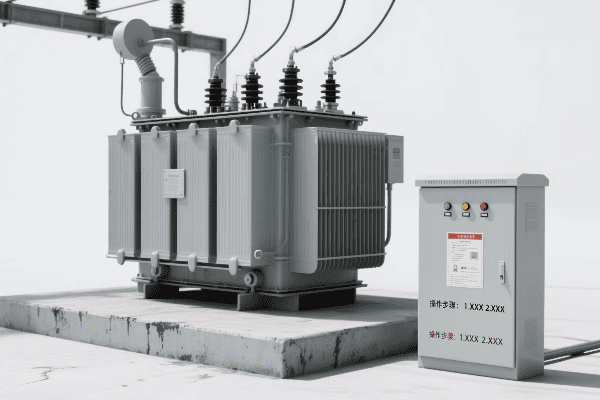
Critical Aspects of After-Sales Support
-
Response Time
- Speed of initial response to support requests
- Time taken to resolve issues
-
Spare Parts Availability
- Inventory of critical components
- Delivery time for replacement parts
-
Technical Documentation
- Comprehensiveness of manuals and guides
- Availability of online resources
-
Training Programs
- Frequency and quality of training offered
- Customization of training to utility needs
-
Remote Diagnostics
- Capability for remote monitoring and troubleshooting
- Integration with utility’s SCADA systems
| Aspect | Importance | Industry Leading Standard |
|---|---|---|
| Response Time | Critical | <24 hours for initial response |
| Spare Parts | High | 95% availability within 48 hours |
| Documentation | Important | Comprehensive online and offline resources |
| Training | Significant | Annual programs, on-site options |
| Remote Diagnostics | Growing Importance | 24/7 monitoring, predictive maintenance |
In my experience, the quality of after-sales support can be the deciding factor in the long-term success of a transformer installation. I recall a situation where we had two nearly identical bids from transformer manufacturers. The deciding factor came down to their after-sales support offerings.
We chose the manufacturer with a more robust support system, and it proved to be a wise decision. About a year after installation, we encountered an unusual issue with one of the transformers. The chosen manufacturer’s response was impressive. They had a technician on-site within 12 hours, and their remote diagnostic team was able to guide us through some immediate steps to mitigate the issue even before the technician arrived.
Spare parts availability is another crucial aspect. In another project, we faced a critical component failure. The manufacturer we had chosen maintained an extensive spare parts inventory and was able to deliver the needed part within 24 hours. This quick response prevented what could have been a prolonged and costly outage.
The quality and accessibility of technical documentation can significantly impact a utility’s ability to perform routine maintenance and troubleshoot minor issues. I’ve seen cases where poor documentation led to maintenance errors and unnecessary call-outs for simple problems. On the other hand, manufacturers with comprehensive, easy-to-understand documentation and online resources empower utility teams to handle a wider range of issues independently.
Training programs offered by manufacturers can be a valuable resource for utility companies. I worked with a manufacturer who provided annual training sessions for our maintenance staff. These sessions covered not just their specific products but also general best practices in transformer maintenance. This ongoing education has been instrumental in improving our team’s capabilities and reducing our reliance on external support.
Remote diagnostic capabilities are becoming increasingly important in the age of smart grids. In a recent project, we prioritized manufacturers offering advanced remote monitoring systems. The chosen system allows for real-time monitoring of key transformer parameters and can predict potential issues before they become critical. This predictive maintenance approach has significantly reduced our unplanned downtime.
It’s also worth considering the manufacturer’s support infrastructure. Some manufacturers have regional support centers, which can provide faster on-site assistance when needed. In one case, a manufacturer’s local support center was able to provide same-day, on-site support for a complex issue, minimizing our downtime.
The flexibility of support offerings is another factor to consider. Some manufacturers offer tiered support packages, allowing utilities to choose the level of support that best fits their needs and budget. In one of our smaller substations, we opted for a basic support package with the option to upgrade if needed, which provided a cost-effective solution without compromising on essential support.
Lastly, I’ve found that the best manufacturers view after-sales support as a two-way street. They not only provide support but also actively seek feedback on their products and services. This approach leads to continuous improvement in both their products and support offerings, creating a mutually beneficial long-term partnership.
Environmental Compliance and Sustainability: Evaluating Manufacturers’ Green Credentials?
Are you concerned about the environmental impact of your transformer choices? In today’s world, sustainability is not just a buzzword – it’s a crucial factor in equipment selection.
Evaluating manufacturers’ green credentials involves assessing their compliance with environmental regulations, energy efficiency standards, and sustainable manufacturing practices. Key factors include the use of eco-friendly materials, recycling programs, carbon footprint reduction initiatives, and development of biodegradable transformer oils. Manufacturers leading in these areas offer more sustainable and future-proof solutions.
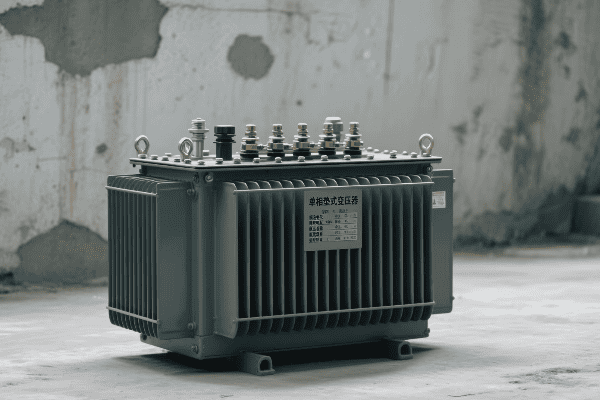
Key Aspects of Environmental Compliance and Sustainability
-
Regulatory Compliance
- Adherence to local and international environmental standards
- Proactive approach to upcoming regulations
-
Energy Efficiency
- Transformer efficiency ratings
- Innovations to reduce energy losses
-
Sustainable Materials
- Use of recyclable or biodegradable materials
- Development of eco-friendly insulating oils
-
Manufacturing Processes
- Energy-efficient production methods
- Waste reduction and recycling in manufacturing
-
Carbon Footprint
- Initiatives to reduce overall carbon emissions
- Carbon offset programs
| Aspect | Importance | Industry Leading Practices |
|---|---|---|
| Regulatory Compliance | Critical | Exceeds current standards |
| Energy Efficiency | High | Meets or exceeds IE4 standards |
| Sustainable Materials | Growing Importance | Use of bio-based oils, recyclable components |
| Manufacturing Processes | Significant | ISO 14001 certified, zero-waste initiatives |
| Carbon Footprint | Increasing Focus | Carbon neutral operations, renewable energy use |
In my years of working with transformer manufacturers, I’ve seen a significant shift towards prioritizing environmental compliance and sustainability. This shift isn’t just about meeting regulations – it’s about being proactive and innovative in reducing environmental impact.
I remember a project where we were comparing two manufacturers with similar technical specifications. The deciding factor came down to their environmental credentials. One manufacturer had recently invested in a state-of-the-art, energy-efficient production facility and was using a new type of biodegradable transformer oil. This forward-thinking approach not only aligned with our company’s sustainability goals but also positioned us well for future environmental regulations.
Regulatory compliance is the baseline, but leading manufacturers go beyond this. I worked with a company that was already compliant with regulations that weren’t set to come into effect for another five years. This proactive approach gave us confidence in the long-term viability of their products and demonstrated their commitment to sustainability.
Energy efficiency in transformers has a huge impact on long-term environmental footprint. In one case, we chose a manufacturer whose transformers exceeded the IE4 (International Efficiency) standards. While these units were more expensive upfront, the energy savings over their lifetime more than justified the initial cost. Plus, it significantly reduced our carbon footprint.
The use of sustainable materials is an area where I’ve seen remarkable innovation. Some manufacturers are now using bio-based oils derived from vegetable sources instead of traditional mineral oils. These oils are not only more environmentally friendly but also offer improved fire safety. In a recent project, we installed transformers with this type of oil in an environmentally sensitive area, meeting both our technical and environmental requirements.
Manufacturing processes themselves are a key area to evaluate. I visited a manufacturing facility that had implemented a zero-waste initiative. They had systems in place to recycle or repurpose nearly all of their production waste. This not only reduced their environmental impact but also improved their operational efficiency, allowing them to offer more competitive pricing.
Carbon footprint reduction is becoming increasingly important. One manufacturer I worked with had invested in on-site renewable energy generation for their factories and had implemented a comprehensive carbon offset program. They provided detailed carbon footprint information for each transformer, allowing us to accurately calculate and report our scope 3 emissions.
It’s also worth looking at a manufacturer’s research and development in sustainability. Some are working on exciting technologies like superconducting transformers, which have the potential to dramatically reduce energy losses. While these technologies may not be commercially viable yet, manufacturers investing in them are likely to be at the forefront of future sustainable solutions.
Another aspect to consider is the manufacturer’s approach to the entire lifecycle of their products. Some offer comprehensive end-of-life recycling programs, ensuring that old transformers are disposed of in an environmentally responsible manner. This can be a significant factor in reducing theoverall environmental impact of your transformer fleet.
I’ve also found it valuable to look at a manufacturer’s sustainability reporting practices. Those who provide comprehensive, transparent reports on their environmental impact and sustainability initiatives are often more committed to these principles. In one case, a manufacturer’s detailed sustainability report helped us justify our choice to stakeholders who were particularly concerned about environmental issues.
Lastly, it’s important to consider how a manufacturer’s green credentials align with your own company’s sustainability goals. In a recent project, we chose a manufacturer whose environmental policies closely matched our own corporate sustainability targets. This alignment not only ensured that our equipment choices supported our broader environmental objectives but also facilitated a more cohesive approach to sustainability reporting and stakeholder communication.
Production Capabilities and Market Position: Ensuring Long-Term Partnership Potential with Transformer Manufacturers?
Have you ever worried about a manufacturer’s ability to meet your long-term needs? In the world of transformers, where relationships often span decades, assessing a manufacturer’s production capabilities and market position is crucial.
Evaluating production capabilities and market position involves analyzing manufacturing capacity, quality control processes, financial stability, and market reputation. Key factors include production volume, technological investments, global presence, and industry partnerships. A strong position in these areas indicates a manufacturer’s ability to be a reliable long-term partner.
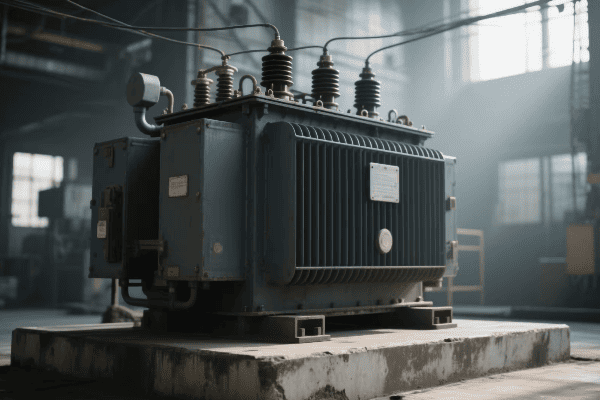
Key Aspects of Production Capabilities and Market Position
-
Manufacturing Capacity
- Annual production volume
- Ability to scale production
-
Quality Control Processes
- Certifications (ISO 9001, etc.)
- In-house testing capabilities
-
Financial Stability
- Company’s financial health
- Investment in facility upgrades
-
Market Reputation
- Customer testimonials
- Industry awards and recognition
-
Global Presence
- International manufacturing and service locations
- Ability to support global projects
| Aspect | Importance | Industry Leading Indicators |
|---|---|---|
| Manufacturing Capacity | High | Flexible production, short lead times |
| Quality Control | Critical | ISO 9001, 14001, OHSAS 18001 certified |
| Financial Stability | Significant | Strong balance sheet, consistent growth |
| Market Reputation | Important | Top industry rankings, case studies |
| Global Presence | Growing Importance | Multiple global facilities, 24/7 support |
In my experience, assessing a manufacturer’s production capabilities and market position is crucial for ensuring a stable, long-term partnership. I recall a situation where we were considering two manufacturers for a large-scale transformer upgrade project. While both had competitive offerings, we delved deeper into their production capabilities and market standing.
The manufacturer we ultimately chose had recently invested in a state-of-the-art production facility. During our site visit, I was impressed by their automated production lines and rigorous quality control processes. This investment not only demonstrated their commitment to staying at the forefront of manufacturing technology but also their ability to meet increasing demand without compromising on quality.
Manufacturing capacity is more than just about volume. It’s about flexibility and the ability to adapt to changing needs. In one project, we faced an unexpected increase in demand. Our chosen manufacturer was able to quickly adjust their production schedule to accommodate our needs without significant delay. This flexibility was a result of their advanced production planning systems and excess capacity maintained for such contingencies.
Quality control processes are paramount in transformer manufacturing. I worked with a manufacturer who had implemented a comprehensive quality management system that went beyond standard ISO certifications. They had invested in advanced testing equipment that allowed for 100% testing of all transformers before shipment. This commitment to quality resulted in a remarkably low defect rate and increased our confidence in their products.
Financial stability is a critical factor that’s often overlooked. I’ve seen cases where manufacturers with shaky finances struggled to invest in new technologies or maintain consistent quality. In contrast, financially stable manufacturers are better positioned to weather market fluctuations and continue investing in research and development. We now regularly review financial reports and credit ratings as part of our evaluation process.
Market reputation can provide valuable insights into a manufacturer’s reliability and customer satisfaction. In one instance, we were considering a relatively new player in the market. Despite their impressive technical specifications, we found mixed reviews from other utilities. This led us to conduct more thorough due diligence, including site visits to utilities using their transformers, before making our decision.
Global presence has become increasingly important, especially for utilities with international operations or those looking for diverse supply chains. I worked on a project where we needed transformers for multiple international locations. The manufacturer we chose had production facilities in three continents, which not only simplified logistics but also provided us with localized support in each region.
Another aspect to consider is a manufacturer’s partnerships and collaborations. Those with strong ties to research institutions or industry consortia often have access to cutting-edge technologies and industry trends. In one case, a manufacturer’s collaboration with a leading university’s power systems department led to early access to an innovative cooling technology, giving us a significant advantage in our grid modernization efforts.
The ability to provide customized solutions is another indicator of a manufacturer’s capabilities. I remember a project with unique environmental constraints that required a specially designed transformer. The manufacturer we chose had a robust custom engineering team that worked closely with us to develop a solution that met our specific needs while maintaining high efficiency and reliability standards.
Long-term availability of spare parts and support is crucial in the transformer industry. We once faced a situation where a manufacturer discontinued a particular model, making it difficult to maintain consistency in our transformer fleet. Since then, we prioritize manufacturers who commit to long-term support and parts availability, even for older models.
Lastly, it’s important to assess a manufacturer’s approach to innovation and future technologies. Those investing in research areas like smart grid integration, IoT capabilities, and advanced materials are more likely to remain competitive and relevant in the long term. This forward-thinking approach ensures that as a utility, you’re partnering with a manufacturer who can support your needs not just today, but well into the future.
Conclusion
Selecting the right oil filled transformer manufacturer is crucial for utility companies. By carefully evaluating performance, innovation, support, sustainability, and production capabilities, utilities can ensure reliable, efficient, and future-proof power distribution systems.
Free CHBEB Transformer Catalog Download
Get the full range of CHBEB transformers in one catalog.
Includes oil-immersed, dry-type, pad-mounted, and custom solutions.
Quick Message
Request A free quote
We'd like to work with you
- +86 15558785111
- [email protected]
- +86 15558785111
What We Do
CHINA BEI ER BIAN (CHBEB) GROUP, with 218 million in registered capital, originated from Beijing Beierbian Transformer Group. Headquartered in Beijing for R&D, it operates major production bases in Nanjing and Yueqing, producing high-quality products.
Latest Product
address
BeiJing
No 3,RongJing East Road,BeiJing Economic Technological Development Area,BeiJing,China
JiangSu
No 7️Xiangfeng Road,Jiangning,NanJing,JiangSu,China
WenZhou
No.211, Wei 16 Road, Industrial Zone, Yueqing, Wenzhou, Zhejiang, China.
XiangYang Industrial Zone ,YueQing,WenZhou,ZheJiang,China
contact us
- [email protected]
- +86 13057780111
- +86 13057780111
- +86 15558785111
Copyright © Bei Er Bian Group


